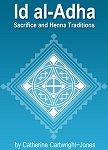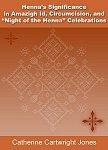|
Patterns for
Henna and Jnun
Catherine Cartwright-Jones c 2004 Kent State University Water
Tortoises living in sacred springs were believed to be jnun.
People with skin diseases went to warm springs in 19th c Morocco to be
"cured" by water tortoises.
In the 19th century Middle East, wolves were believed to seek out and eat jnun. There were many folk art patterns in these countries called "the wolf's mouth" that had "fangs" ready to eat up malevolent spirits! 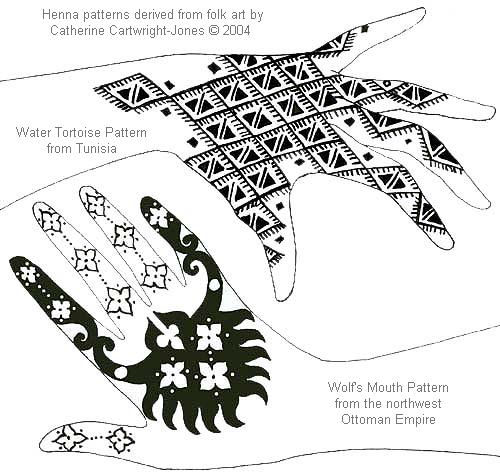 The patterns above are for single henna applications. Those below are adapted for shading and gilding. Click on Shading and Gilding to learn these special techniques! 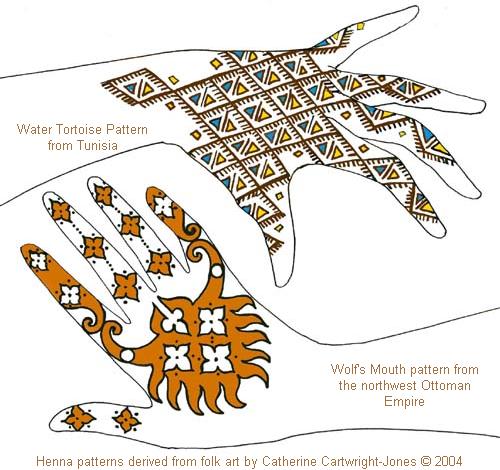 The Ethiopian pattern below shows a spirit captured in a pattern. This demonstrates the belief that a person could access a jinn through a schematic representation of the spirit. People similarly use a crucifix to represent a Christian deity, a veve to represent a Voodoo saint, or a rabbit's foot to represent luck. A believer addresses hopes and fears to these representations, hoping for favorable response from whatever they believe lies beyond the symbol. A few people believe fervently in the power of symbols and are deeply offended if they are used frivolously or by non-believers. Others value their beauty, the needs and belief systems they represent, and use them respectfully, but do not believe they have intrensic supernatural power. 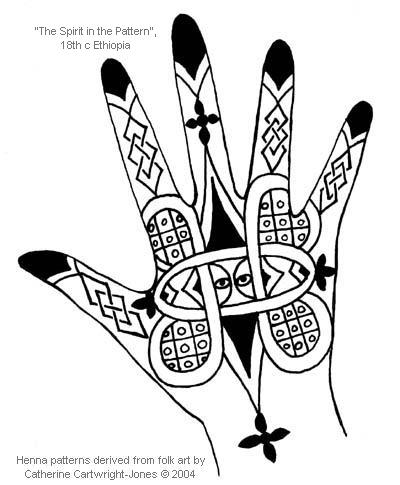 The pattern above, is for a single
henna application.
Those below are adapted for shading and gilding. Click on Shading and Gilding to learn these special techniques! 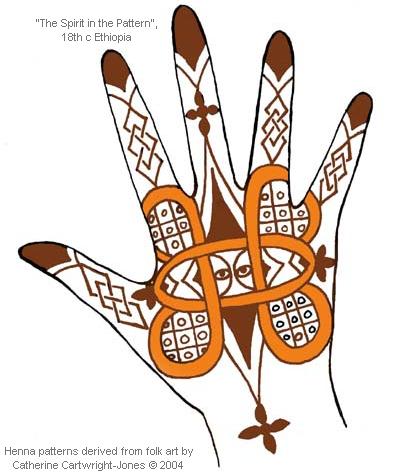 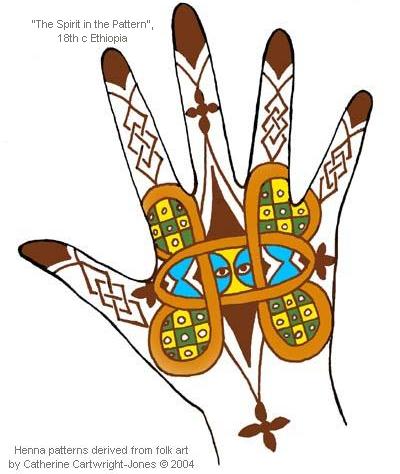 See books that have patterns for averting malevolent spirits and inviting benevolent spirits! 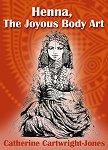 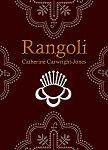 See books about henna traditions! Web resources on Jinn According to Quran and Sunnah The Henna Page Main Index http://www.hennapage.com/henna/mainindex.html *"Henna,
the
Joyous Body Art"
the Encyclopedia of Henna Catherine Cartwright-Jones c 2000 registered with the US Library of Congress TXu 952-968 |
